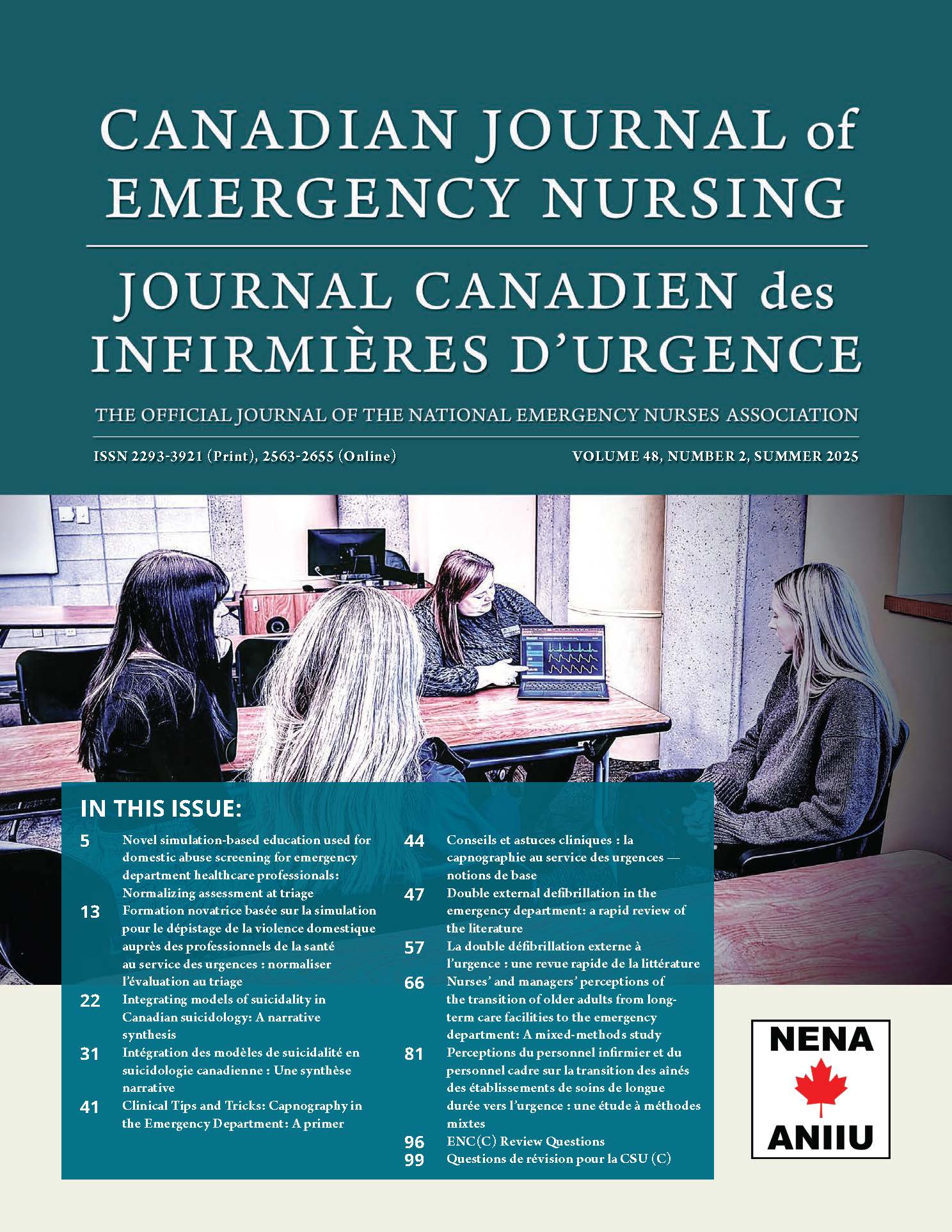Capnography in the Emergency Department: A Reivew
DOI:
https://doi.org/10.29173/cjen250Keywords:
capnography, emergency capnography, EMS, emergency department, ETCO2Abstract
Capnography is an underappreciated tool in the Emergency Department. Continuous monitoring of a patient’s CO2 output provides insights into their ventilatory, perfusion, and metabolic status at the bedside. Since it is a continuous process, capnography can often warn of dangerous conditions, especially deteriorations, seconds to minutes before other modalities. This article briefly reviews the physiology behind CO2 production, how capnography monitors work, and what they tell us. Key waveforms are reviewed, with emphasis on those that may impact immediate patient care decisions. The remainder of the article briefly discusses various clinical presentations and how the associated capnography measurements, along with patient history and other diagnostic tools, can provide early notice of life-threatening conditions or deterioration.
References
American Heart Association. (2020). Advanced Cardiovascular Life Support. American Heart Association.
Cacho, G., Pérez-Calle, J. L., Barbado, A., Lledó, J. L., Ojea, R., & Fernández-Rodríguez, C. M. (2010). Capnography is superior to pulse oximetry for the detection of respiratory depression during colonoscopy. Revista Espanola de Enfermedades Digestivas, 102(2), 86-89. https://doi.org/10.4321/S1130-01082010000200003
Frakes, M. A. (2011). Capnography During Transport of Patients (Inter/Intra-Hospital). In J. S. Gravenstein, M. B. Jaffe, N. Gravenstein, & D. A. Paulus (Eds.), Capnography (Second ed.). Cambridge University Press.
Greenbaum, H. (2024). Emergency Capnography (First ed.). CRC Press. https://doi.org/10.1201/9781003491576
Gupta, P. K., & Hopkins, P. M. (2017). Diagnosis and management of malignant hyperthermia. BJA Education, 17(7), 249-254. https://doi.org/10.1093/bjaed/mkw079
Kamel, K. S., & Halperin, M. L. (2017). Fluid, Electrolyte, and Acid-Base Physiology (5th ed.). Elsevier USA.
Kheng, C. P., & Rahman, N. H. (2012). The use of end-tidal carbon dioxide monitoring in patients with hypotension in the emergency department. International Journal of Emergency Medicine, 5(1). https://doi.org/10.1186/1865-1380-5-31
Kodali, B. S., & Urman, R. D. (2014). Capnography during cardiopulmonary resuscitation: Current evidence and future directions. Journal of Emergencies, Trauma, and Shock, 7(4), 332-332. https://doi.org/10.4103/0974-2700.142778
Ward, K. R. (2011). The Physiological Basis for Capnometric Monitoring in Shock. In J. S. Gravenstein, M. B. Jaffe, N. Gravenstein, & D. A. Paulus (Eds.), Capnography (Second ed., pp. 231-238). Cambridge University Press.
Ward, K. R., & Yealy, D. M. (1998). End-tidal carbon dioxide monitoring in emergency medicine, Part 1: Basic principles. Academic Emergency Medicine, 5(6), 628-636. https://doi.org/10.1111/j.1553-2712.1998.tb02473.x
Downloads
Published
How to Cite
Issue
Section
License
Copyright (c) 2025 Hugh Greenbaum

This work is licensed under a Creative Commons Attribution 4.0 International License.
The Canadian Journal of Emergency Nursing is published Open Access under a Creative Commons CC-BY 4.0 license. Authors retain full copyright.




